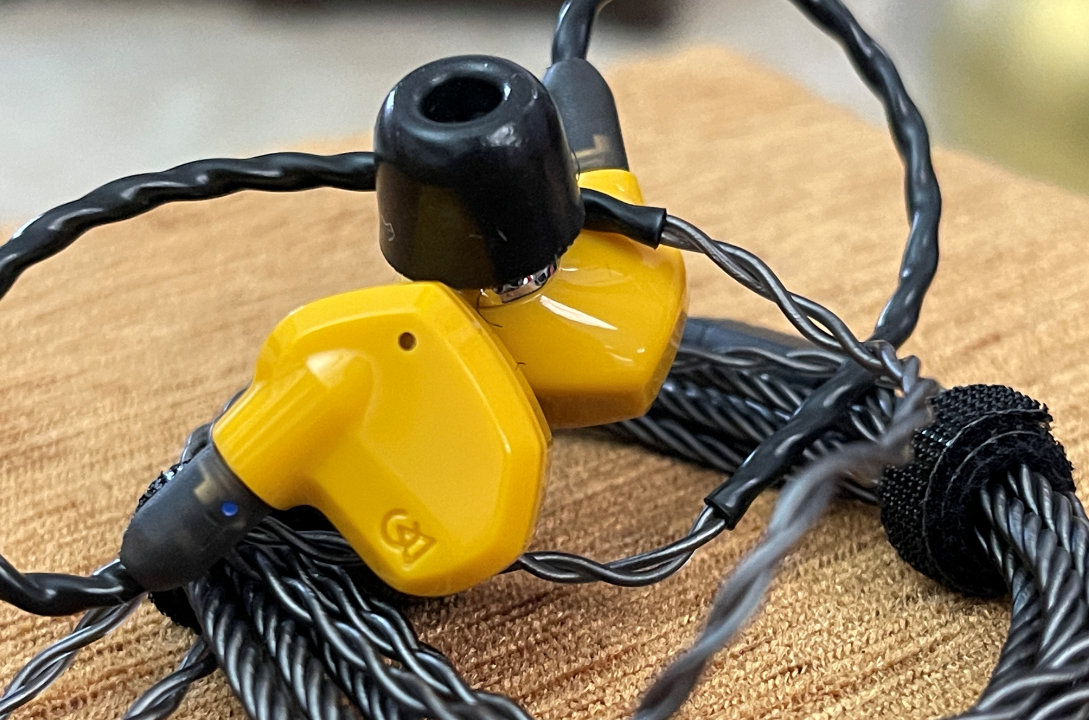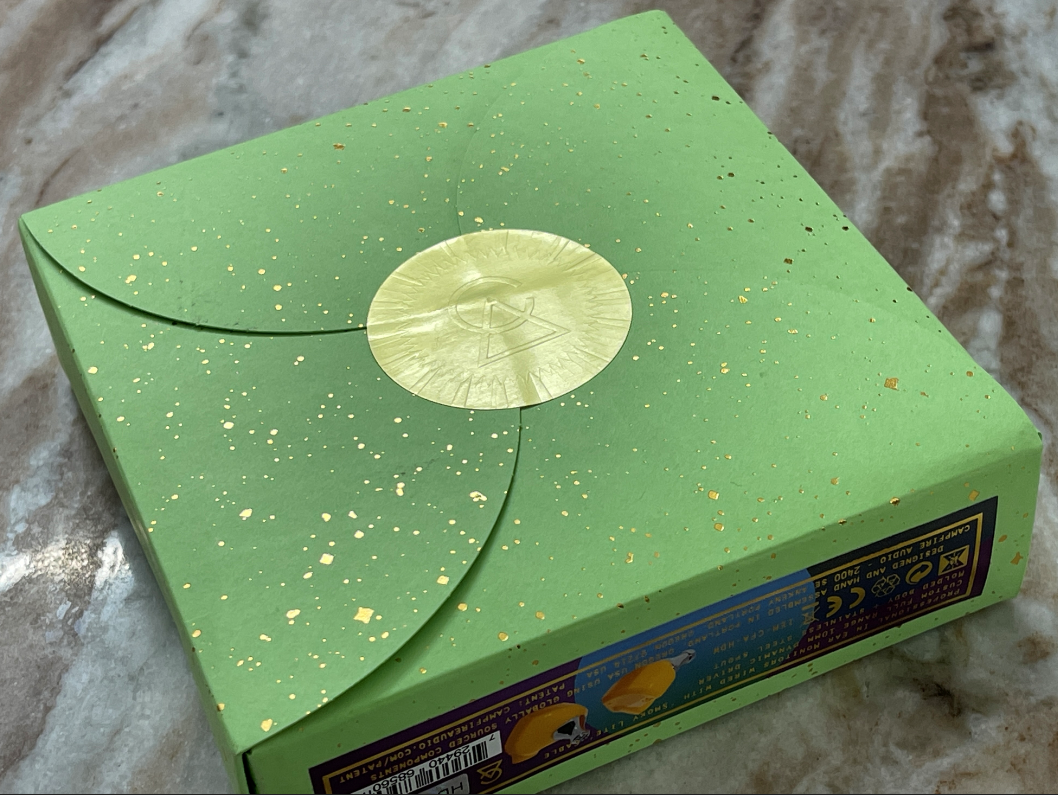Campfire Audio Honeydew : The Bass Champ!
Disclaimer:
This review unit was sent by
@CampfireAudio for the purpose of an honest review.
Everything mentioned in this review are purely my own based on my experiences with the IEM.
Introduction:
Recently Launched in 2021, Campfire Audio Honeydew is part of Campfire Audio’s new line of IEMs targeted towards entry-level option for audiophiles, musicians, producers, and DJs. The Honeydew promises to deliver a big, juicy, bassy sound with great soundstage and is deal for Rock, Pop genres. brings more fun out of the music.
The Honeydew is priced at $249.
Tech Features:
The Honeydew comes with the unmatched cohesiveness of a single full-range dynamic driver in a all-new ABS earphone body.
Honeydew’s custom-built 10mm LCP diaphragm dynamic driver performance is characterized by a reference level bass response that is fast and detailed.
Music creators and listeners who crave punchy, detailed bass would find Honeydew delivering to their preferences.
It delivers great Bass with an expansive soundstage that is clear and detailed.
Honeydew was built for Bass lovers who prefer an expansive soundstage to provide a concert-like experience.
Specifications:
Specifications are as below:
- 5Hz–18 kHz Frequency Response
- 94 dB SPL @ 1kHz: 17.68 mVrms
- 17.44 Ohms @ 1kHz Impedance
- Mellow Yellow ABS Body
- Single Custom Full Range 10mm Dynamic Driver
- Bio-Cellulose Diaphragm
- Custom Beryllium / Copper MMCX Connections
- Stainless Steel Spout
Design & Build Quality:
Campfire introduced a new shell design with the Honeydew. This new shape is much smaller and more ergonomic than some of their previous models, and that might come as a relief to some.
These IEMs resemble a piece of hard candy, especially with its hard yellow shell that they call “mellow-yellow.”
It’s a solid build that still uses the high-grade materials Campfire uses to make their more high-end IEMs.
The Honeydew sports a stainless steel spout and custom beryllium MMCX connectors along with many other interior elements.
This is likely Campfire’s most comfortable IEMs and any ear tip will fit perfectly on the nozzle.
The body of the Honeydew feels firm and never distracts from enjoying the sound.
Packaging & Accessories:
The Honeydew continues the typical Campfire Audio packaging with new bright colors and a smaller size.
The theme is Green with the customary collage of colors and the Honeydew itself is on the front label.
Accessories:
Flip the box lid and inside you have the accessories inside a similarly colored cardboard tube and an all-new Vine Green colored canvas carry-case inside of which you will find the Honeydew and the Smokey Lite Litz cable. As always with Campfire, the accessory line-up is just beautiful as well as plentiful.
The full lineup of accessories closely matches the IO and is as follows:
- Final e-tips (xs/s/m/l/xl)
- Foam Marshmallow tips S/M/L
- Silicone single-bore tips S/M/L
- 3 x cushioned pockets (for the monitors and foam tips)
- Cleaning brush/pick
- New Canvas carry case
- Smokey Lite Litz cable
- Campfire Audio pin badge
The Stock Cable:
The cable is the Campfire Audio Smokey Lite Litz Cable – Silver Plated Copper Conductors with Beryllium Copper MMCX and 3.5mm plug which is good soundwise and also looks wise. Really nothing to complain about here - all good.
Amp-ing Requirements:
Due to it's low impedance levels, this IEM requires does not any sort of amp-ing at all. However, it shines quite a bit when paired with a good & powerful source.
NOW LET'S TALK ABOUT THE SOUND....
Items used for this review:
DAC/AMP: @iFi audio Micro iDSD Signature,
DAP/Source : Cayin N6 Mk2 with E02 motherboard, Laptop & iPad
Streaming Source: QOBUZ
Upgrade Cable:
Following upgrade cables used :
- CEMA Electro Acousti GS series: 4 core Au-Ag alloy 1% pure gold 99% pure silver cable
Moving forward... All sound impressions are using this upgrade cable as I found it to be much better than the stock cable.
Ear Tips:
I've tried tip-rolling with a variety of tips including Final Audio E Series (both Transparent Red & Black ones),
@SpinFit Eartip CP100+ & CP100 and JVC Spiral.
I've found Final Clear RED ear tips to suit me preferences best and have used that mostly.
Tracks Used:
The tracks I have used can be found from the below playlist that I have used and generally use for most reviews... This playlist is acquired from many reviewers but mostly from
@Otto Motor . Thank you.
Let's now talk about the quality of Sound....
The BASS:
This is the key element of the Honeydew’s sound signature. There’s a quite strong bass presence here, and it helps shape the IEM’s slightly dark-ish tonality going forward. The bass is consistently resonant and impactful, creating a meaty response that emphasizes many different sound elements. You can feel every kick drum pounding, and every bass line dancing. The sub-bass is quite detailed and articulated. The bass is balanced in a way that it doesn’t feel dark or heavy. There’s a mid-bass focus that provides a strong impact, but doesn’t step on the rest of the mix too much.
The MIDS:
The Mids on the honeydew are slightly recessed. This is the weakest link in this IEMs performance.
Some added warmth and some nice textural qualities are there with good amount of texture.
Synths appear with great fullness, and vocals cut through the mix with much-needed clarity.
The vocals sounded clear and natural and feels very immersive.
There’s some light smearing moving from the bass into the lower mids, but never enough that it causes the IEMs to feel muddy.
The mids overall are slightly pulled back, but well-constructed
The Treble:
The Treble on the Honeydew is smooth with some shimmery details.
The Treble has ample clarity & texture but slightly darker. This is likely due to the overall Bass focused tuning.
The SOUNDSTAGE:
The Honeydew has a massive expansive Soundstage with a good width & height emphasis and also depth.
The soundstage is very wide, but the most impressive part of it is its height.
The Honeydew excels in creating a more whole image that the music can properly occupy.
The Honeydew isn’t afraid of extending itself a bit more outward.
It might not have the same level of separation as their more high-end models, but the layering and spatial imaging are still well articulated.
Imaging & Timbre:
There is a beautiful solidity and balance to how the Honeydew delivers instrumental notes yet the staging is open enough to ensure neither vocal nor instrument is competing for the same space. You get a very immersive experience with excellent sense of positioning and layering.
The timbre is great - specially for the genres that is is focused on, Rock, EDM, Hip-hop, etc.
Comparisons :
Campfire Audio Honeydew vs Sennheiser IE300 vs Unique Melody 3DT :
The $300 price bracket has become quite crowded in recent times with every other manufacturer targeting this price segment. This feels like the sweet spot of the pricing line where quality meets great price. I have 2 other contenders with me both of which fall into the similar price bracket and also has Bass focused tuning.
Considering the above, it seemed logical to me to pin the Campfire Audio Honeydew against
@Sennheiser IE300 and
@UniqueMelody 3DT.
Rather than making this a 1vs1 scenario, I've put all 3 together and will rate them according to their strengths & weaknesses.
Bass:
As all of them are bass focused IEMs, the competition in the Bass department was quite fierce. Among many of the test track for Bass... I've found 2 great tracks by
Bela Fleck & the Flecktones: "
The Secret Drawer" and "
Star of the County down"... where I could capture the differences very vividly. While the UM 3DT and Honeydew both have great details, The IE300 has deeper thump & is punchier. However, IE300 does miss out on some of the details due to it's added depth. The Honeydew has a better balance of the details and Thump than the other 2 and is the preferred IEM for me for Bass.
The rating would be...
Honeydew >>IE300>>3DT
Mids & Treble:
When it came to the Mids, due to its 3 DD architecture, the 3DT seemed to have better details and slightly better texture. Though in all 3 cases the mids are a bit recessed, the 3DT does a better job here with more details. In terms of vocals, the 3DT had slight advantage but the honeydew had ample details and felt more immersive. As these findings were consistent in all tracks, I'm not quoting any particular set of tracks here. the IE300 seemed to have slight peaks in the upper mids & treble while the other 2 did not. Hence, 3DT would be the preferred one for mids & treble.
The rating for the Mids & Treble would be...
3DT >>Honeydew>>IE300
Soundstage & Timbre:
When it comes to Soundstage, both Honeydew & IE300 comes with massive staging capabilities. While the width & height of the Honeydew seemed better, in terms of depth the IE300 was significantly better. Here the 3DT fell short due to it's shallower staging both in terms of width & depth in comparison to the other 2, despite having above average staging for the mentioned price bracket. In terms of Imaging, both Honeydew & 3DT excelled and the IE300 was also not far behind. in terms of Timbre I preferred the IE300 while the other 2 were great also. the IE300 just felt more natural and realistic.
The rating for the Soundstage & timbre would be...
IE300 >>Honeydew>>3DT
Conclusion :
Having said all that - at the $249 price point, Honeydew delivers an incredible performance that gives you thick, powerful bass with details & clarity coupled with impressive all around performance. It's a great value-for-money considering it's build & comfort. So if you’re looking for chill vibes and deep bass, Honeydew has just what you need. Highly recommended for people who prefer a bit more Bass.










































 . I was looking for a pair of IEMs to wear in bed at night for quiet listening sessions which were both comfortable and did not emit noise externally. Both of those tests passed. The sound quality is what I was hoping for - plenty of deep clean bass, with a well controlled response for mids and highs. There’s a lot less sibilants than some of my headphones but not at the expense of detail. I’m running them on a Mojo/Poly combo but they really don’t need much power to operate well. My music tastes are varied but the Honeydews seem well suited to prog. In summary they are well worth the very reasonable price - IMO, naturally.
. I was looking for a pair of IEMs to wear in bed at night for quiet listening sessions which were both comfortable and did not emit noise externally. Both of those tests passed. The sound quality is what I was hoping for - plenty of deep clean bass, with a well controlled response for mids and highs. There’s a lot less sibilants than some of my headphones but not at the expense of detail. I’m running them on a Mojo/Poly combo but they really don’t need much power to operate well. My music tastes are varied but the Honeydews seem well suited to prog. In summary they are well worth the very reasonable price - IMO, naturally.
